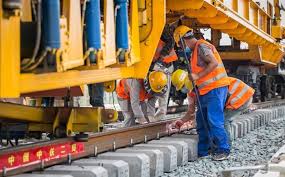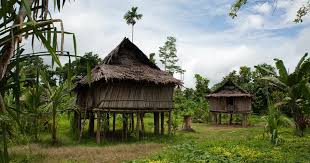In the heart of Southeast Asia, the landlocked nation of Laos is emerging as a pivotal player in the region’s shifting dynamics. As countries across Asia, including Japan, push forward with ambitious decarbonization strategies, they find themselves in a complex dance with China’s expansive Belt and Road Initiative (BRI). This collision course sets the stage for a fascinating struggle for influence, with Laos at the forefront.
The Mekong River: Lifeline of Southeast Asia
Origins and Course
The mighty Mekong River begins its journey high on the Tibetan Plateau in China. It winds its way through mainland Southeast Asia, eventually spilling into the South China Sea in Vietnam. This river is a crucial artery for the region, supporting millions of people and countless ecosystems.
Nam Ngiep 1 Hydroelectric Power Plant
Following one of the Mekong’s tributaries in Laos leads us to the impressive Nam Ngiep 1 hydroelectric power plant. Built and operated by Japan’s Kansai Electric Power and others, this facility is a marvel of modern engineering. The reservoir, with a capacity of 2.2 billion cubic meters, stretches out over 70 kilometers, making it a significant landmark in the region.
Comparing Hydro Projects: Nam Ngiep 1 vs. Kurobe River No. 4
Kurobe River No. 4 Power Station
Kansai Electric’s experience with large-scale hydro projects isn’t new. The Kurobe River No. 4 Power Station in central Japan’s Toyama prefecture was instrumental in Japan’s postwar reconstruction. Despite its smaller reservoir, Kurobe’s height and power output are on par with Nam Ngiep 1, showcasing Kansai Electric’s prowess in hydroelectric technology.
Nam Ngiep 1’s Scale and Impact
Nam Ngiep 1 dwarfs its Japanese counterpart in terms of reservoir capacity, highlighting its critical role in Laos’ energy infrastructure. The plant sends a staggering 95% of its electricity to Thailand, underscoring Laos’ position as a significant energy exporter.
Laos: The Renewable Energy Powerhouse
Electricity Exports
Electricity is Laos’ largest export, making up about 30% of its total exports. The country’s reliance on hydroelectric power is striking, with over 70% of its energy coming from renewable sources. This has earned Laos the moniker “the battery of Southeast Asia.”
Expanding Renewable Energy Exports
Laos is not resting on its laurels. The country is actively expanding its electricity exports, with neighboring ASEAN countries keeping a close watch. Laos’ renewable energy capacity holds the key to regional decarbonization efforts, making it a critical player in the fight against climate change.
Regional Decarbonization Efforts
Challenges of Decarbonization
Countries in Southeast Asia are racing to decarbonize their economies, but the path is fraught with challenges. Many nations lack suitable locations for renewable energy plants, and high fossil-fuel power generation rates remain a hurdle. Additionally, governments must balance the need for clean energy with the demands of economic growth.
Laos’ Role in Regional Strategies
Laos’ renewable energy exports are a beacon of hope for the region. As countries seek to reduce their carbon footprints, Laos’ hydroelectric power becomes a critical asset. However, the dynamics of energy trade in the region are complex, with political and economic factors playing significant roles.
China’s Belt and Road Initiative
BRI’s Influence in Southeast Asia
China’s Belt and Road Initiative is a massive infrastructure project that aims to enhance global trade routes. In Southeast Asia, BRI projects have included everything from roads and bridges to power plants. China’s influence in the region is undeniable, and its investments are reshaping the economic landscape.
Intersection with Decarbonization Efforts
The intersection of China’s BRI and regional decarbonization efforts creates a unique set of challenges and opportunities. While China’s investments can boost infrastructure development, there are concerns about environmental sustainability and debt dependency.
Japan’s Involvement in Laos
Kansai Electric’s Contributions
Japan, through Kansai Electric and other entities, has made significant contributions to Laos’ energy sector. Projects like Nam Ngiep 1 are examples of Japan’s commitment to supporting renewable energy development in the region.
Japan’s Decarbonization Goals
Japan’s decarbonization goals align with its investments in Laos. By supporting renewable energy projects, Japan not only aids Laos but also reinforces its own commitment to reducing carbon emissions.
Thailand’s Energy Dynamics
Importing Electricity from Laos
Thailand is a major importer of electricity from Laos. This energy trade is crucial for Thailand’s energy security and its efforts to decarbonize.
Political Tensions with Singapore
Recently, tensions arose when Singapore sought to import electricity from Laos via Thailand. Thai Prime Minister Srettha Thavisin’s reaction—indicating that Thailand would purchase any electricity sent through its territory—highlights the intricate political dynamics at play.
The Future of Energy in Southeast Asia
Balancing Growth and Sustainability
Southeast Asian countries face the dual challenge of supporting economic growth while transitioning to sustainable energy sources. This balancing act is critical for the region’s future.
Laos as a Model for Renewable Energy
Laos’ success in harnessing hydroelectric power sets a precedent for other countries in the region. By investing in renewable energy infrastructure, Southeast Asian nations can follow Laos’ lead in reducing their carbon footprints.
Laos stands at the crossroads of decarbonization efforts and China’s Belt and Road Initiative. As the country expands its renewable energy exports, it plays a crucial role in the region’s struggle for influence and sustainability. The intricate interplay of political, economic, and environmental factors makes Laos a fascinating case study in the evolving energy landscape of Southeast Asia.








